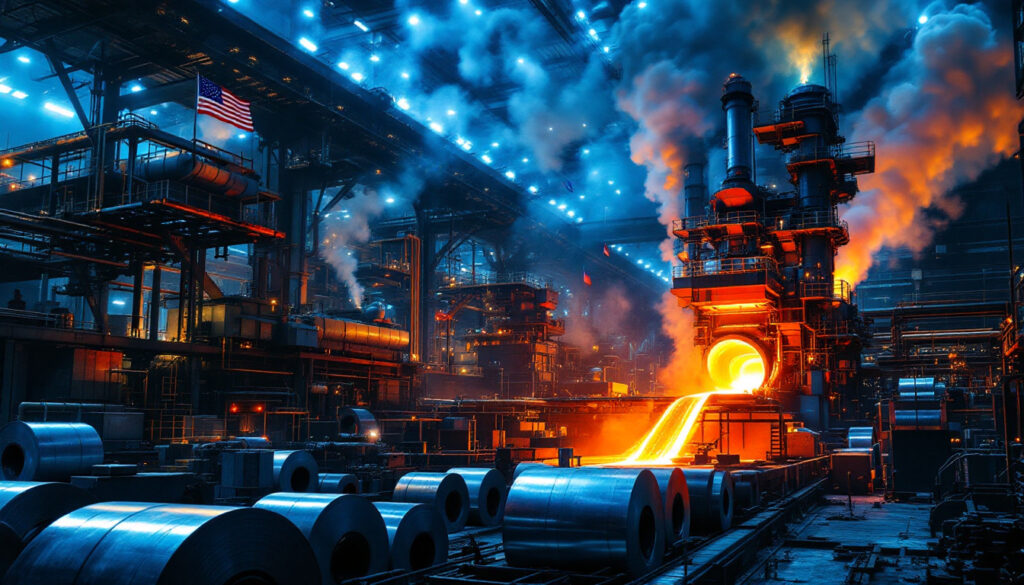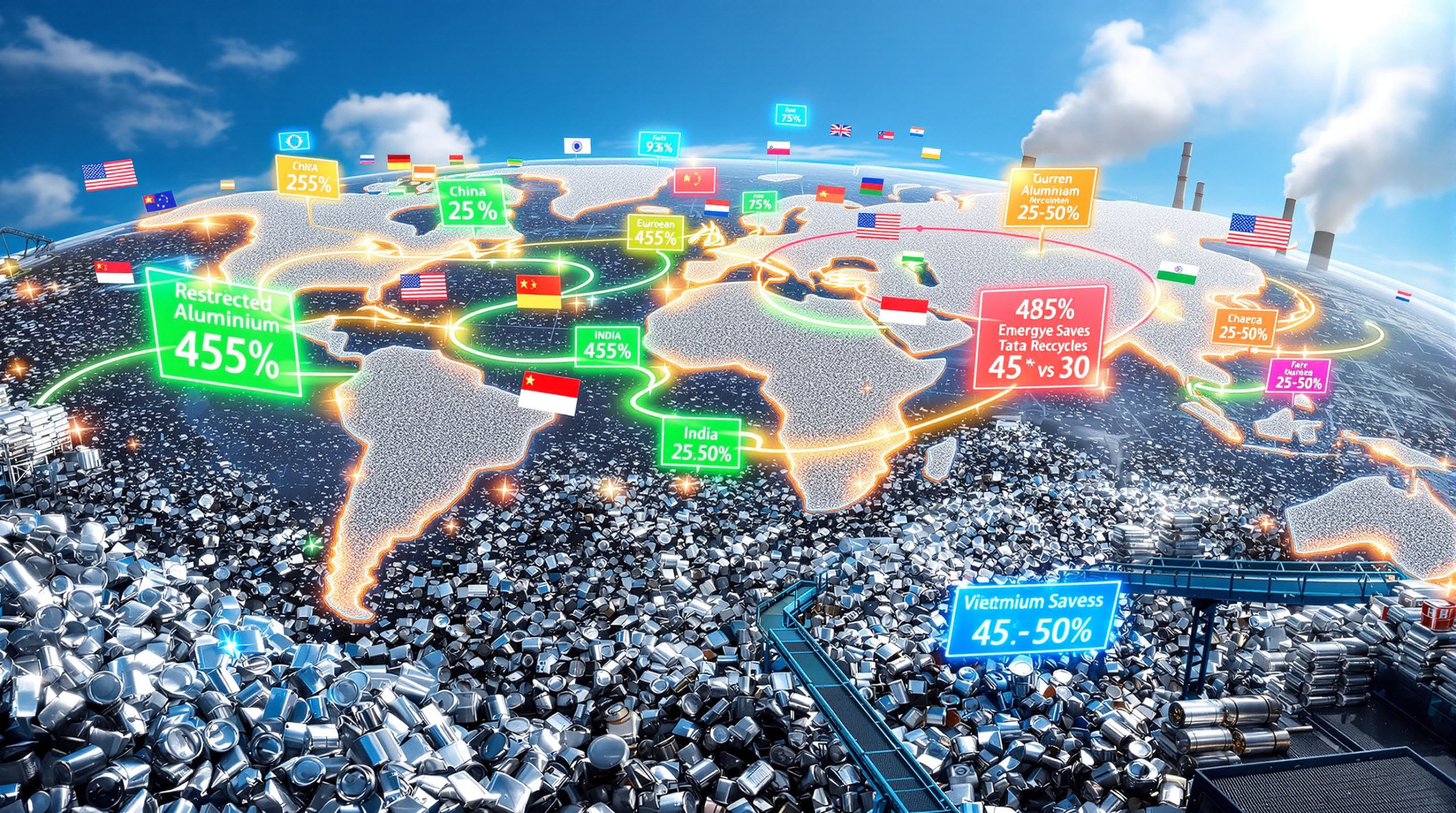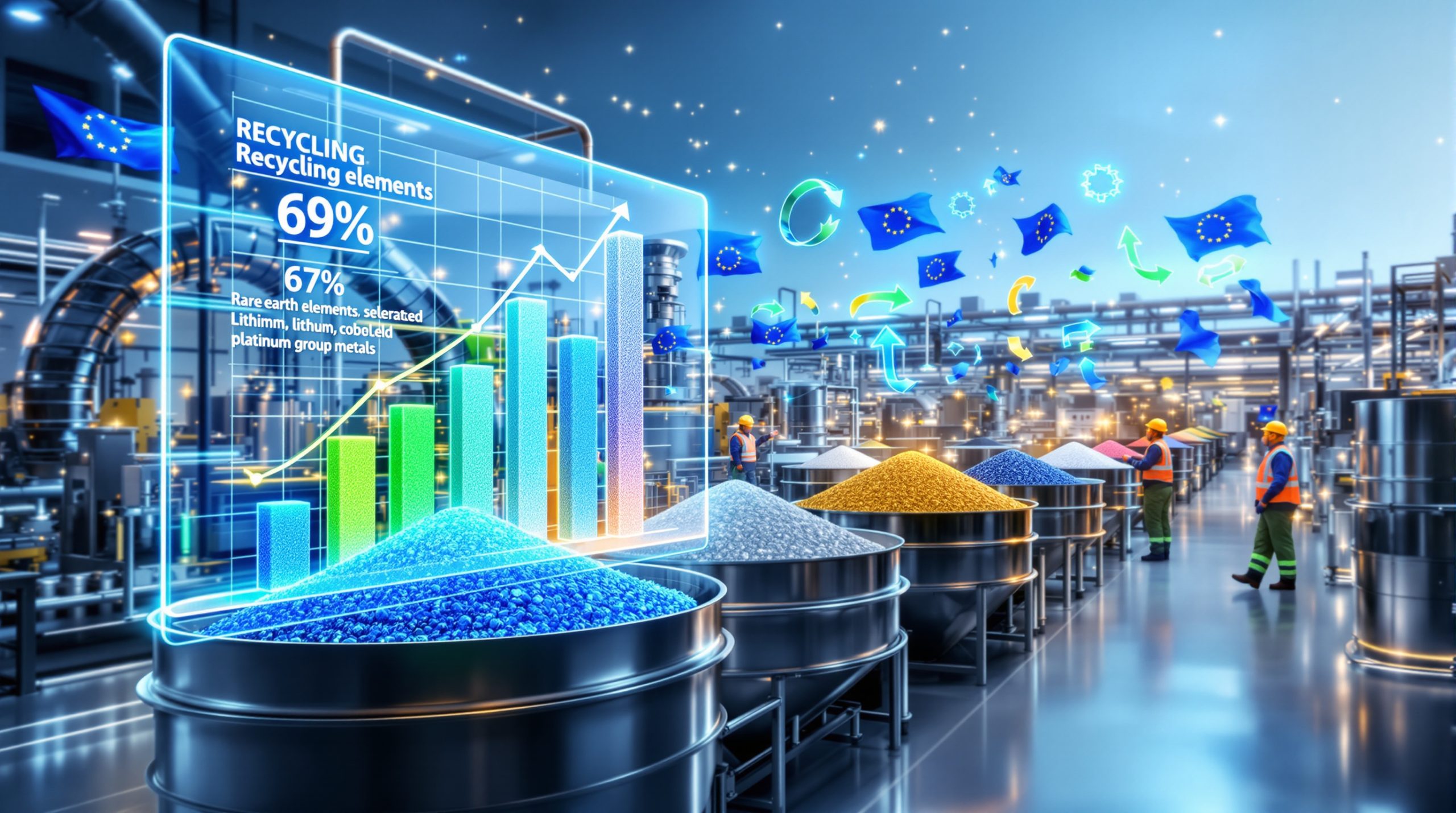How Has ArcelorMittal Responded to Global Trade Disruptions?
ArcelorMittal, the world's largest steelmaker outside China, has developed a multifaceted strategy to navigate increasingly complex global trade dynamics. The company has positioned itself to capitalize on price benefits from protectionist policies while simultaneously preparing for potential market volatility.
In Q1 2025, ArcelorMittal reported a notable 12% year-over-year increase in steel prices, primarily driven by protective tariffs and domestic support policies in the U.S. and EU markets. However, this short-term gain comes with strategic concerns, as evidenced by their 7% downward revision of global steel demand forecasts.
CEO Aditya Mittal articulated the company's position: "Trade barriers create short-term price benefits but destabilize long-term supply chains, forcing strategic recalibration." This statement reflects the company's pragmatic approach to managing immediate opportunities while preparing for long-term disruptions.
The steelmaker has taken decisive action through geographic repositioning. In 2024, ArcelorMittal invested $500 million to relocate a production facility from Asia to Texas, strategically bypassing U.S. tariffs while securing access to the protected North American market. This move demonstrates their willingness to make substantial capital commitments to maintain market presence despite trade barriers.
ArcelorMittal's "Smart Carbon" initiative represents another strategic response, aiming to reduce carbon emissions by 30% by 2030. This aligns perfectly with the EU's Carbon Border Adjustment Mechanism, positioning the company favorably as sustainability becomes increasingly tied to market access requirements through green transformation strategies.
What Are the Current Steel Market Conditions?
Price Dynamics in Major Markets
Steel prices have shown remarkable regional divergence, with U.S. hot-rolled coil reaching $1,150/ton in April 2025—a substantial 25% increase from 2024 levels. This upward momentum contrasts sharply with more moderate price movements in less protected markets, creating significant arbitrage opportunities for strategic traders.
Bloomberg analyst Lisa Lu explains: "Post-pandemic recovery disparities have fragmented pricing, with EU and U.S. markets decoupling from Asia." This decoupling creates a challenging environment for global producers who must navigate vastly different market conditions across their operational footprint.
The EU market has experienced its own price appreciation, largely driven by the Carbon Border Adjustment Mechanism (CBAM) which added approximately €50/ton to imported steel. This policy has effectively boosted domestic producers' margins by around 15%, creating a protected pricing environment.
Regional capacity utilization rates tell an important story about market fundamentals: U.S. mills operate at approximately 82% of capacity compared to just 68% in China. This disparity reflects both policy support in the U.S. and persistent overcapacity issues in Asian markets.
Supply-Demand Imbalance Factors
The global steel market continues to navigate complex supply-demand dynamics shaped by several intersecting factors:
- Production capacity disparities: Global steel production fell by 4.3% in 2024, primarily due to energy cost volatility, though the contraction was unevenly distributed across regions.
- Raw material cost pressures: Input costs for iron ore and coking coal—representing 40-60% of production expenses—have surged 18% year-over-year in 2025, partly due to the iron ore price surge.
- Logistical bottlenecks: Shipping costs for raw materials increased by 45% in 2024 due to Red Sea disruptions, with Panama Canal delays further complicating transoceanic trade.
- Post-pandemic industrial recovery: Manufacturing activity across key steel-consuming sectors like automotive and construction has recovered at vastly different rates across regions.
- Energy transition impacts: Steel producers face varying energy costs depending on regional energy policies and access to renewable resources.
How Are Government Policies Affecting Steel Markets?
Protectionist Measures in the US
The United States has implemented comprehensive protective policies benefiting domestic steel producers, creating one of the most insulated markets globally. Section 232 tariffs remain the cornerstone of this approach, imposing a 25% levy on steel imports that has successfully reduced foreign shipments by 37% since 2023.
The "Buy American" provision represents another powerful market intervention, mandating 90% domestic steel content in federal infrastructure projects. With these requirements applying to approximately $1.2 trillion in contracts, the policy creates substantial captive demand for U.S. producers.
Additional measures supporting domestic steelmakers include:
- Tax credits covering up to 30% of investments in advanced manufacturing facilities
- Accelerated depreciation allowances for steel industry capital expenditures
- Federal grants for workforce development in steel-producing regions
- Streamlined permitting processes for capacity expansion projects
- Enhanced enforcement against circumvention of existing trade measures
European Support Mechanisms
The European Union has developed a distinctive approach to steel industry support, heavily centered on accelerating decarbonization while maintaining competitiveness. The €750 billion Green Steel Fund represents the flagship initiative, subsidizing up to 40% of manufacturers' transition costs toward lower-carbon production.
Thyssenkrupp AG's transformation provides a compelling case study of this approach in action. The German steelmaker secured €2 billion in EU grants to transition its Duisburg plant to hydrogen-based steelmaking—a project that would likely be economically unfeasible without public support.
European policy tools include:
- Carbon Border Adjustment Mechanism implementation, adding tariff-equivalent costs to carbon-intensive imports
- State aid exemptions for green steel investments, providing regulatory flexibility
- Targeted anti-dumping duties focused on specific product categories and origins
- Innovation funding prioritizing steel industry technology breakthroughs
- Regional development grants for steel-producing areas undergoing transition
Trade economist Dr. Maria Fernandez cautions: "Protectionism shields domestic industries but risks retaliatory measures, as seen in India's 2024 export bans." This observation highlights the cascade effect of trade interventions, where one country's protective measure often triggers responses from trade partners, creating complex geopolitical shift strategies.
What Specific Concerns Has ArcelorMittal Raised?
Demand Forecast Adjustments
ArcelorMittal has significantly tempered its market outlook, revising its 2025 global demand growth forecast from an initially optimistic 3.1% to a more cautious 1.8%. This 42% reduction in expected growth reflects growing uncertainty about industrial activity across key markets.
The downward revision appears particularly concerning given the company's traditionally conservative forecasting approach. Historical analysis shows ArcelorMittal's demand projections typically falling within 0.5 percentage points of actual outcomes, making this substantial adjustment a notable departure from previous patterns.
CFO Genuino Christino highlighted regional policy volatility as a major concern, noting that "unpredictable policy shifts in emerging markets like Brazil have delayed $300 million in investments." This statement reveals how regulatory uncertainty directly impacts capital allocation decisions.
Supply Chain Vulnerabilities
ArcelorMittal has identified several critical vulnerabilities in global steel supply chains:
- Shipping disruptions: The 45% surge in raw material shipping costs during 2024 created a $380 million impact on operational expenses.
- Raw material volatility: Increasing concentration in iron ore mining (top three producers now control 71% of seaborne supply) has reduced negotiating leverage.
- Regulatory complexity: The company now manages compliance with 47 different steel-specific trade measures across its key markets, up from 31 in 2022.
- Data governance challenges: ArcelorMittal's supply chain AI tool, SteelChain, reduced inventory costs by 12% but faces increasing restrictions on cross-border data flows.
- Labor disruptions: A 2024 strike at ArcelorMittal's South African mines halted 15% of global iron ore supply for six weeks, highlighting workforce dependencies.
How Does Trade Uncertainty Impact the Steel Industry?
Market Segmentation Effects
Trade barriers have created increasingly fragmented steel markets with profound structural implications. Price disparities between U.S. and Asian markets widened to an unprecedented $200/ton in 2025—the largest gap since 2018—creating distinct regional pricing ecosystems.
This fragmentation manifests in several measurable trends:
- Cross-border steel trade volumes dropped 22% in 2024, representing the steepest decline in a decade
- Regional quality specifications are diverging as standards become influenced by local industry preferences
- Product innovation increasingly follows market-specific paths rather than global solutions
- Smaller producers face prohibitive compliance costs when serving multiple protected markets
- Trade flows have shifted dramatically, with secondary markets gaining importance
WTO Director-General Ngozi Okonjo-Iweala has expressed concern about this trend, warning that "regionalization risks fracturing the global steel market into competing blocs." This potential outcome would represent a fundamental reshaping of what was historically one of the most globally integrated industrial sectors.
Competitive Landscape Shifts
The competitive dynamics within the steel industry have undergone significant transformation due to trade disruptions:
- Domestic producers in protected markets have gained substantial margin advantages, with operating profit differentials of 12-15% compared to export-dependent competitors
- "Nearshoring" trends have increased U.S. steelmakers' capital expenditures by 18% for localized production hubs
- Vertical integration has accelerated, with manufacturers securing raw material sources to reduce supply uncertainties
- Specialty product segments have gained investment priority as they often face fewer trade restrictions
- Consolidation has accelerated in certain regions as smaller producers struggle with trade compliance costs
Nucor Corporation exemplifies this strategic adaptation, having opened a $450 million mini-mill in Ohio in 2024 specifically designed to bypass tariff-affected imports. This facility utilizes electric arc furnace technology that relies primarily on domestic scrap rather than imported pig iron.
What Strategic Responses Are Available to Steelmakers?
Production Flexibility Approaches
Forward-thinking steel companies are implementing sophisticated strategies to enhance operational flexibility and mitigate trade disruptions:
- Modular production systems: Leading producers have redesigned production lines with standardized, reconfigurable components that can be rapidly adapted to changing product requirements or relocated to different markets.
- Geographic diversification: Companies are strategically distributing production assets across multiple trade zones to maintain market access regardless of policy changes.
- Raw material flexibility: Investments in technologies that can utilize varying grades of inputs provide protection against supply chain disruptions.
- Production scheduling optimization: Advanced algorithms now enable rapid production adjustments in response to changing market conditions or trade flows.
- Regulatory intelligence integration: Real-time monitoring of global trade policy developments informs production and distribution decisions.
These approaches enable steelmakers to quickly pivot operations in response to changing trade conditions, reducing vulnerability to specific market disruptions.
Market Positioning Tactics
Steel producers are adopting increasingly sophisticated market positioning strategies:
- Value-added focus: Developing specialized products with unique properties that face fewer trade restrictions while commanding premium prices.
- Sustainability differentiation: Positioning low-carbon production processes as competitive advantages, especially in markets with carbon pricing mechanisms.
- Local supply chain integration: Building stronger relationships with domestic customers through co-development initiatives and just-in-time delivery systems.
- Strategic acquisitions: Purchasing existing production assets in protected markets to secure market access without regulatory hurdles.
- Digital service enhancement: Adding software and predictive maintenance services to core steel products, creating additional value streams less affected by trade barriers.
Successful companies are increasingly combining multiple tactics to create comprehensive market positioning strategies that balance opportunity capture with risk mitigation in the evolving landscape of global commodities insights.
How Are Pricing Strategies Evolving in Response?
Regional Price Differentiation
Steel companies have developed increasingly sophisticated pricing approaches to navigate fragmented markets:
- Geopolitical risk premiums: Adding 5-8% price adjustments for regions with uncertain trade policy trajectories
- Contract structure innovation: Implementing dual-currency pricing and floating tariff adjustments
- Strategic customer segmentation: Offering different pricing models to customers based on their regulatory exposure
- Value-based differentiation: Moving beyond commodity pricing toward solution-based approaches for high-value applications
- Dynamic adjustment mechanisms: Incorporating real-time trade policy indicators into pricing algorithms
These approaches enable producers to maintain margins while providing customers with greater predictability despite volatile trade conditions.
Cost Management Innovations
In response to market uncertainties, cost management has become increasingly sophisticated:
- Energy efficiency programs have yielded average savings of 12% through waste heat recovery systems and process optimization
- Digital twins for production facilities reduce maintenance costs by 15-20% through predictive intervention
- Workforce augmentation technologies enhance labor productivity by up to 25% in modernized facilities
- Supply chain digitalization initiatives reduce procurement costs by 7-10% through improved supplier collaboration
- Shared service centers consolidate back-office functions across multiple markets, reducing administrative overhead
ArcelorMittal's experience demonstrates how these innovations deliver tangible benefits. Their implementation of digital process controls at European plants has reduced energy consumption by 8.5% while simultaneously improving product consistency.
What Are the Long-Term Implications for Global Steel Markets?
Industry Restructuring Possibilities
The current trade environment is accelerating structural changes in the steel industry that will likely persist even if trade tensions eventually moderate:
- Regional self-sufficiency: Major economic blocs are prioritizing domestic production capacity for strategic sectors, with steel considered critical infrastructure.
- Technology-based segmentation: A growing divide between producers investing in advanced manufacturing technologies and those competing primarily on cost.
- Value chain reconfiguration: Downstream fabrication increasingly follows steel production to minimize cross-border movement of semi-finished products.
- Sustainability-driven consolidation: Carbon reduction requirements favor larger producers with capital resources to invest in green technologies.
- Specialization acceleration: Producers focusing on specific products or applications rather than broad commodity portfolios.
These structural shifts suggest that even if trade barriers eventually recede, the industry is unlikely to return to previous globalized patterns. Instead, we may see lasting impacts similar to those observed in other sectors experiencing commodity super-cycle impacts.
Investment Pattern Shifts
Capital allocation strategies are evolving substantially in response to trade uncertainties:
- Research and development spending has increased by 35% among top-tier producers, focused primarily on process efficiency and carbon reduction
- Brownfield optimization projects receive 2.3x more investment than greenfield expansions due to lower regulatory risk
- Digital transformation initiatives capture 15-20% of capital budgets, up from 5-8% five years ago
- Sustainability-related investments represent approximately 30% of major producers' capital expenditures
- Geographic diversification strategies now influence approximately 40% of major capital allocation decisions
Important disclaimer: These investment trends reflect current market conditions and regulatory environments. Individual companies should conduct thorough analysis before making investment decisions based on these industry patterns.
How Should Stakeholders Navigate the Current Environment?
Risk Management Frameworks
Effective stakeholders are implementing comprehensive risk management approaches suited to today's volatile trade environment:
- Scenario-based planning: Developing detailed response plans for multiple potential trade policy outcomes
- Stress testing: Assessing financial resilience under various disruption scenarios
- Regulatory monitoring: Establishing dedicated teams tracking policy developments across key markets
- Supply chain redundancy: Identifying and qualifying alternative suppliers across different trade zones
- Financial hedging: Utilizing sophisticated instruments to manage currency and commodity price exposures
These frameworks enable proactive rather than reactive responses to trade developments, providing crucial decision-making advantages in volatile markets.
Opportunity Identification Methods
Despite challenges, the current environment presents significant opportunities for well-positioned organizations:
- Local content advantages: Domestic producers in protected markets can leverage preferential access and pricing power
- Sustainability leadership: Companies with advanced decarbonization capabilities can secure premium pricing and preferential market access
- Technological differentiation: Producers with proprietary processes can develop products exempt from general trade restrictions
- Consolidation opportunities: Strategic acquisitions of distressed assets in restricted markets provide immediate market entry
- Public-private partnerships: Collaboration with governments on strategic initiatives offers both funding and market protection
Organizations that systematically evaluate these opportunity categories can develop strategic approaches that balance prudent risk management with aggressive growth in favorable segments.
FAQ: Understanding ArcelorMittal and Trade Disruptions
How significant is ArcelorMittal in the global steel industry?
ArcelorMittal represents approximately 5.5% of global steel production capacity, making it the world's largest steel producer outside China. The company operates in 60 countries with 168,000 employees and annual crude steel production capacity of 92 million tonnes. This global footprint makes ArcelorMittal particularly sensitive to trade policy changes and market access restrictions.
What specific government support measures are affecting steel prices?
Government interventions include:
- Import tariffs: The U.S. Section 232 tariffs impose a 25% levy on steel imports
- Domestic content requirements: "Buy American" provisions mandate 90% domestic steel in U.S. federal infrastructure projects
- Carbon border adjustments: The EU
Want to Catch the Next Major Mineral Discovery?
Discover how ASX-listed companies with significant mineral finds have delivered substantial returns to early investors by exploring Discovery Alert's dedicated discoveries page. The proprietary Discovery IQ model delivers real-time alerts on ASX mineral discoveries, empowering you to position yourself ahead of the market with actionable investment insights.




